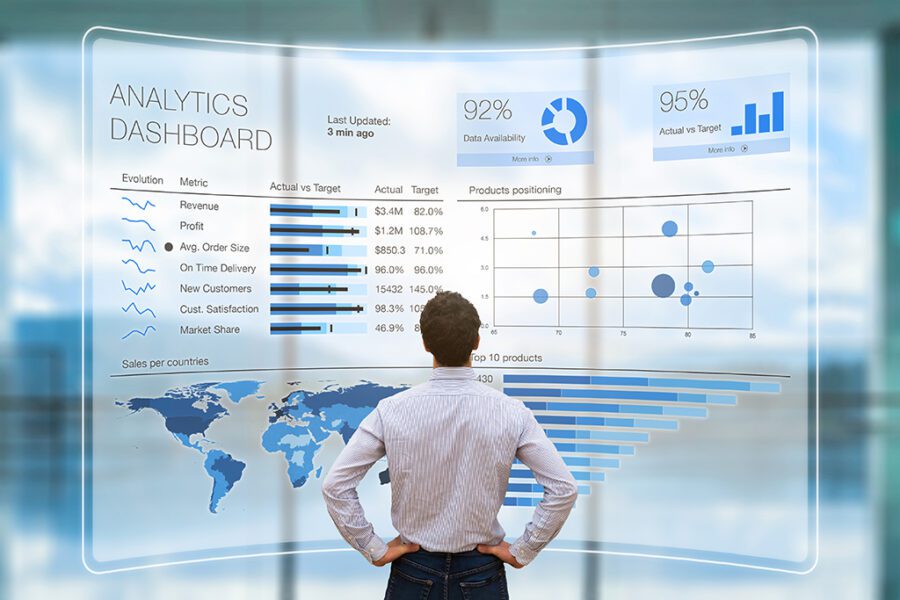Data is an asset that has become an integral part of the business world. It can be utilized to determine the fate of a company. Power BI, Microsoft Fabric and other powerful tools are used by businesses to unlock the full potential of their data. These platforms are the foundation of business analytics and when they are integrated with Azure Data Factory become an unstoppable force.
Power BI Power BI Your Business Intelligence Companion
Power BI by Microsoft is an extremely powerful software for business intelligence which allows businesses to display and communicate their information. Users can create interactive reports and dashboards that transform raw data into useful insight.

Power BI is scalable to fit your business needs. Power BI seamlessly integrates various data sources and makes it simple to consolidate data from different systems and databases. With its simple drag-and-drop interface, even non-technical users can quickly produce insightful reports and analyzes.
Power BI’s platform allows for real-time data processing. This means you are always working with accurate data. It has a broad range of graphs and visualizations that allow the data to be presented in a palatable and appealing manner. It is crucial to be able to share and collaborate on reports. This can improve decisions within your business and help create a data-driven workplace.
Microsoft Fabric: The weaving of data Excel
Microsoft Fabric is a framework that orchestrates and connects data across Microsoft services. Fabric is the layer which transforms your data into an easily accessible and usable entity. This allows companies to gain insights quickly.
Microsoft Fabric helps businesses maintain data integrity and consistency as they work with growing the volume of data. Microsoft Fabric works with a wide range of applications from Azure Data Lake Storage, Azure SQL Data Warehouse, and Power BI. This interconnectedness allows data to flow smoothly and for insights to be extracted from multiple sources.
Microsoft Fabric excels in data transformation. You can use it to organize data, cleanse and make it ready for analysis, and also ensure that it conforms to your organization’s data governance policies. Microsoft Fabric assures you the accuracy of your data as well as reliable and ready for analysis.
Azure Data Factory: The Gateway to Data Transformation
Azure Data Factory is another essential component in the modern business intelligence landscape. This cloud-based service allows you to manage and schedule data-driven processes. By coordinating data movement and data transformation, Azure Data Factory paves the way for meaningful knowledge.
Azure Data Factory is numerous strengths, including the ability to connect with many data sources. Your data is able to be integrated seamlessly, whether located on premises, in the cloud or both. This will give you complete visibility of the whole data ecosystem regardless of where your data is located. It can handle batch processing, stream data in real time, and big data analysis, which makes it ideal for a variety of situations.
Azure Data Factory provides a visual interface to ease the creation of data pipes. You don’t need to be an expert in programming to design, schedule, or track workflows for data. This allows business users to manage their data integration processes, and opens the door to self-service data preparation.
Power BI with Microsoft Fabric, Azure Data Factory, and Power BI
When Power BI and Azure Data Factory when combined, they can create a powerful trio that will enhance your data analysis capabilities. These three technologies can work in synergy:
1. Data Integration Azure Data Factory can connect to many data sources to ensure your data is available. This capability for data integration feeds Microsoft Fabric which orchestrates data across a variety of services. It ensures that your data are properly structured, cleaned and ready for analysis using Power BI.
2. Data Transformation: Microsoft Fabric is a key component of data transformation. It lets you transform your data to meet your preferences. Fabric ensures that data is prepared for analysis regardless of whether you are cleansing or changing data.
3. Power BI will take over when your data has been improved and is ready. You can create visually appealing dashboards and reports, which make complex data more understandable. The insights you gain can be shared with your team members to help them make data-driven choices.
4. Scalability: Azure Data Factory can expand to handle growing amounts of data. Combining Power BI with Microsoft Fabric will ensure that your data remains steady and reliable as your company grows.
5. Power BI & Azure Data Factory offer real-time data that is vital for a fast and efficient decision making.
We also have a conclusion.
To be competitive in the business intelligence world businesses must be able to use data effectively. Power BI, Microsoft Fabric and Azure Data Factory are a powerful trio that can help you take your business intelligence to new levels. This trio will enable you to create stunning visuals, maintain the consistency of your data, or simplify the data flow. Discover the power of data by utilizing business intelligence.